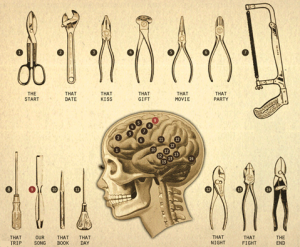Critical Thinking: Sound Reasoning
 Reasoning is a set of mental power tools in the toolbox of Critical Thinking. The four primary forms of reasoning that we teach our children are:
Reasoning is a set of mental power tools in the toolbox of Critical Thinking. The four primary forms of reasoning that we teach our children are:
- Deductive reasoning
- Inductive reasoning
- Abductive reasoning
- Retroductive Reasoning
The main division between forms of reasoning is between deductive reasoning and inductive reasoning. Formal logic has been described as ‘the science of deduction’ while inductive reasoning is generally carried out within the field of informal logic. Both are vital and important tools in the disciplined work of thinking.
Deductive Reasoning
Deductive Reasoning is deemed valid if the argument’s conclusion must be true when the premises (the reasons given to support that conclusion) are true. One classic example of deductive reasoning is that found in syllogisms like the following:
Premise 1: All humans are mortal.
Premise 2: Socrates is a human.
Conclusion: Socrates is mortal.
The reasoning in this argument is valid, because there is no way in which the premises, 1 and 2, could be true and the conclusion, 3, be false.
Validity is a property of the reasoning in the argument, not a property of the premises in the argument or the argument as a whole. In fact, the truth or falsity of the premises and the conclusion is irrelevant to the validity of the reasoning in the argument. The following argument, with a false premise and a false conclusion, is also deemed “valid” because of its form.
Premise 1: If green is a color, then the sky is falling.
Premise 2: Green is a color.
Conclusion: The sky is falling.
Again, if the premises in this argument were true, the reasoning is such that the conclusion would also have to be true. The argument is valid. This is how even when the argument is entirely valid, entirely preposterous conclusions can be reached. Another example:
Premise 1: If the earth is billions of years old, then the Holy Bible is clearly wrong.
Premise 2: The earth is billions of years old.
Conclusion: The Holy Bible is clearly wrong.
Obviously, the scientific evidence no longer supports that the earth is billions of years old. Furthermore, the Holy Bible is the verbally and verifiably inspired, inerrant, and authoritative word of God. It doesn’t get more “right” than that. Still, the form of the argument is “valid” which superficially lends cogency to the erroneous conclusion.
It also must be noted that in a deductive argument with valid reasoning, the conclusion contains no more information than is contained in the premises. Therefore, deductive reasoning does not increase one’s knowledge base. It is entirely non-ampliative.
Inductive Reasoning
Induction is a form of inference producing propositions about unobserved objects or types, either specifically or generally, based on previous observations or experiences, or to formulate general statements or axioms based on limited observations of recurring phenomenal patterns.
A classic example of inductive reasoning comes from the empiricist David Hume:
Premise: The sun has risen in the east every morning up until now.
Conclusion: The sun will also rise in the east tomorrow.
Inductive reasoning contrasts strongly with deductive reasoning in that, even in the best, or strongest, cases of inductive reasoning, the truth of the premises does not guarantee the truth of the conclusion. Instead, the conclusion of an inductive argument follows certain degrees of probability.
Inductive reasoning can rely upon a chain of premises that each rely upon the truth of those which precede them and lead to the induced conclusion.
Premise 1: Birds have flown south for the winter every year until now.
Premise 2: Birds are flying south for the winter this year.
Conclusion: Birds will fly south for the winter next year.
Inductive reasoning was favored by Saint Thomas and is notable in such works as Summa Theologica, a rigorous study on right argumentation and certainly a divinely inspired work.
The Argument from Design (The Teleological Argument):
Premise 1: All natural bodies in the world act towards ends.
Premise 2: These objects are in themselves unintelligent.
Premise 3: Acting toward an end is characteristic of intelligence.
Premise 4: Therefore, there exists an intelligent being that guides all natural bodies toward their ends.
Conclusion: This being is that whom we call God.
On a related note, the conclusion of an inductive argument contains more information than is already contained in the premises. Thus, this method of reasoning increases one’s knowledge base. It is ampliative.
Other power tools
 These are the two primary schools of reasoning, but there are others that are also nice to keep in the tool box. You may not need a soldering iron every day but it sure is handy to have when you do need it, isn’t it? It also helps to know how to use a soldering iron when you need to break it out.
These are the two primary schools of reasoning, but there are others that are also nice to keep in the tool box. You may not need a soldering iron every day but it sure is handy to have when you do need it, isn’t it? It also helps to know how to use a soldering iron when you need to break it out.
Abductive Reasoning
Abduction is a method of logical inference introduced by Charles Sanders Peirce which comes prior to induction and deduction. The colloquial name for Abduction is “guessing” or even following a hunch.
Abductive reasoning starts when an inquirer considers of a set of seemingly unrelated facts, armed with the hunch that they are somehow connected or related.
The term abduction is commonly presumed to mean the same thing as hypothesis; however, an abduction is actually the process of inference that produces a hypothesis as its end result. Abduction is first, then hypothesis, then experimentation and/or observation, then theory.
Retroductive Reasoning
Retroduction is similar to induction, but it is predicated on known or assumed relationary rules and observations that contain at least one of the predicates or predictors of the rules in question. Another predicate of the relationary rule is then generalized to the observation due to the coincidence of the other predicates in both the observation and the rule.
Let’s simplify.
Retroduction is commonly applied in medical diagnostics via the patient’s symptoms and established diagnostic decision trees. Retroduction is commonly applied in police work to determine the initial suspects of a crime via means, motive, and opportunity.
Conclusion:
 Reasoning is a critical skill. In life, we have seen so many times when simple emotion or man’s sinful nature lead to unreasonable demands. The ability to reason, and recognize the types of reasoning involved in dealing with issues, are powerful tools to pull out of the Critical Thinking tool box.
Reasoning is a critical skill. In life, we have seen so many times when simple emotion or man’s sinful nature lead to unreasonable demands. The ability to reason, and recognize the types of reasoning involved in dealing with issues, are powerful tools to pull out of the Critical Thinking tool box.
Scripture informs us that the thoughts of the righteous are right, but those of the unrighteous are deceitful (Proverbs 12:5). Proper reasoning keeps us from deceiving and from being deceived. Proper reasoning keeps our thoughts right, and our hearts full of wisdom.
Hallee
I’m so grateful for your visit, today.
You would bless me if you added me to your ![]() feed reader or subscribed
feed reader or subscribed  via email.
via email.
You can also become a fan on ![]() Facebook or follow me on
Facebook or follow me on ![]() Twitter. I would love to see more of you!
Twitter. I would love to see more of you!

